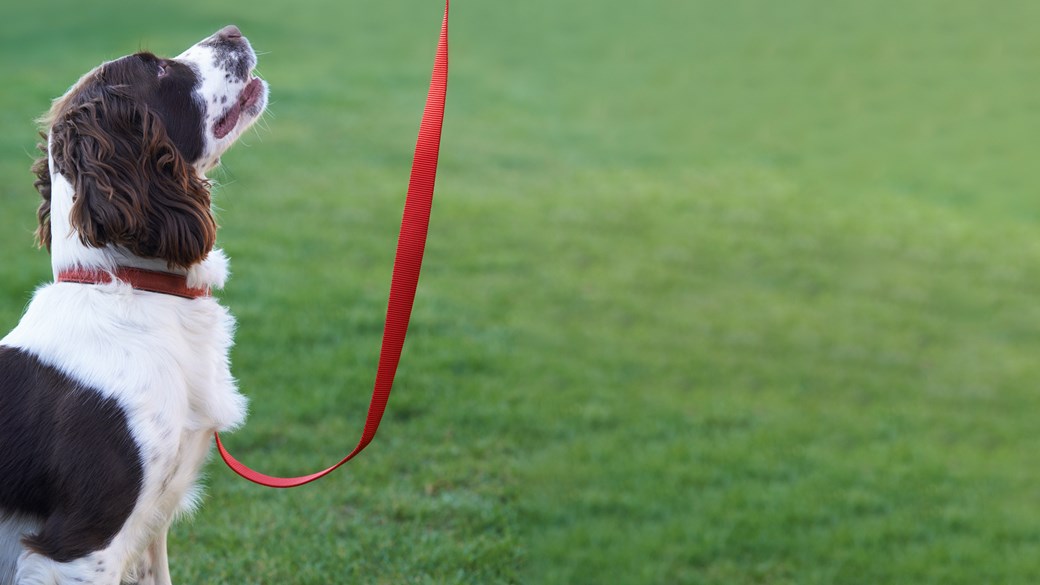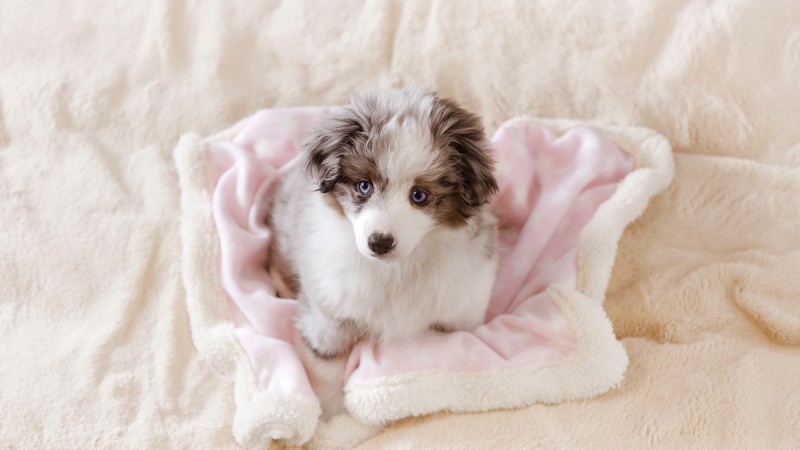
Lead Training Your Puppy
You will walk your dog every day, and even the best trained dogs will need to spend some time on a lead.
Teaching your dog how to behave on the lead will make this safe for you both, and certainly more enjoyable!
Difficulty: Medium-Hard
Equipment: Treats, an appropriately sized collar, a lead
Time: Start slow and build up over time Being able to safely lead walk is important for dogs, keeping you both safe and allowing you to be in control when there may be dangers like cars. Puppies have very short attention spans, and trying to introduce new training for more than 5-10 minutes at a time will just result in frustration for both of you!
Read more of our top dog training tips here.
More about lead training
Before you start, you have to get your puppy used to wearing a collar. Choose something lightweight and appropriate for their size. This may mean having to buy a new collar as they grow. Larger collars may also not close tight enough. , which could open the door for slipped collars and escapees!
Collars should have enough room for you to slip two fingers in between the collar and their neck. Puppies can grow rapidly so check the collar fit daily. To get your dog used to a collar, put it on and immediately distract them with treats and play. If they scratch at the collar, this is also call for a distraction. When they’re not paying any attention to their collar any more, you can remove it. Over the course of a couple of days, slowly increase the length of time that your dog or puppy wears the collar until they stop noticing it.
A collar is a legal requirement, but for walking harnesses are physically kinder and help give you more control. Introducing a harness alongside a collar is a great idea – just go through the same process, lways check the fit and taking it back a step or two if your dog seems stressed or uncomfortable with the harness at any point.
Once you have done your preliminary training at home, and your puppy is up-to-speed with their vaccinations, it’s time to try something new! Start by getting their attention with your treats, when they are on the lead, so they know you have them. Call their name or make a sound (this is your ‘cue’) that you want them to associate with ‘food is coming’. When your puppy looks at you, give them a treat. This should keep them focused on you.
Keep giving treats for your puppy looking at you or coming to you when you give the signal. Click and reward whenever your puppy is in the required position or when lead is loose. As your puppy gets the idea, gradually increase the distance between you both so your puppy has to walk to get to you and get their treat. Build this up so they have to walk a few paces with you to get the reward, and make sure to offer plenty of praise when they get it right. Puppies will only be able to concentrate for 5-10 minutes at a time. If you think your puppy is losing focus, it’s time to give them a break.
Gradually build up your puppy’s experience, so they have to walk for longer periods of time next to you before they get their reward. You’ll soon find that they are walking nicely! At this point, you’re ready to head outdoors. Expect some regression here, as the outside is full of exciting distractions! Keep the first walks short and keep rewarding for response to your cue.
Lead training is a common sticking point for many owners, as it is time consuming, frustrating and can impact initially on the enjoyment of walks (in the long term, of course, the opposite is true!). Some tips include:
- Pulling. If your dog is pulling on the lead, it's because they want to go somewhere! This can be the most frustrating part of lead training. If you are struggling, use a double ended lead and attached to the harness and collar when in training mode and just the harness when it's leisure time. Make sure to capture your dog's behaviour when they are walking nicely this means giving a treat or praise when they check in with you or are walking with a loose happy lead. Dogs love reward, and will start to repeat behaviours that work! Giving treats from behind you will also encourage your dog to spend more time there, as that is where the food comes from!
- Lunging. Dogs may lunge at something on the walk, such as another dog or a vehicle. When you know your dog's triggers for lunging, try and pre-empt the lunge and distract your puppy with treats and attention.
- Treats. Take some high value treats when you know the environment is going to be full of distractions, and try and pre-empt problem areas, items or individuals by getting your dog's attention ahead of time.
- Collar choice. Some dogs really struggle to get pulling on the lead under control. Head-collars can help with this, and are used instead of neck collars to attach to the lead, although your dog is still required by law to wear a neck collar with an ID tag on. Head collars need to be introduced very carefully to avoid frustration and anxiety before you even get out of the door like anything new, buildup the time worn slowly, and reward positive behaviours. Never use a choke chain or a prong collar or shock collar as these are very negative and training should always focus on rewarding correct behaviours rather than punishment, this is called positive reinforcement.
Join our VIP puppy club
Join our VIP club to receive advice, rewards, savings and a host of offers including £30 off Complete Care Junior or Complete Care. Plus, every swipe of your VIP card helps animals in need near you.

